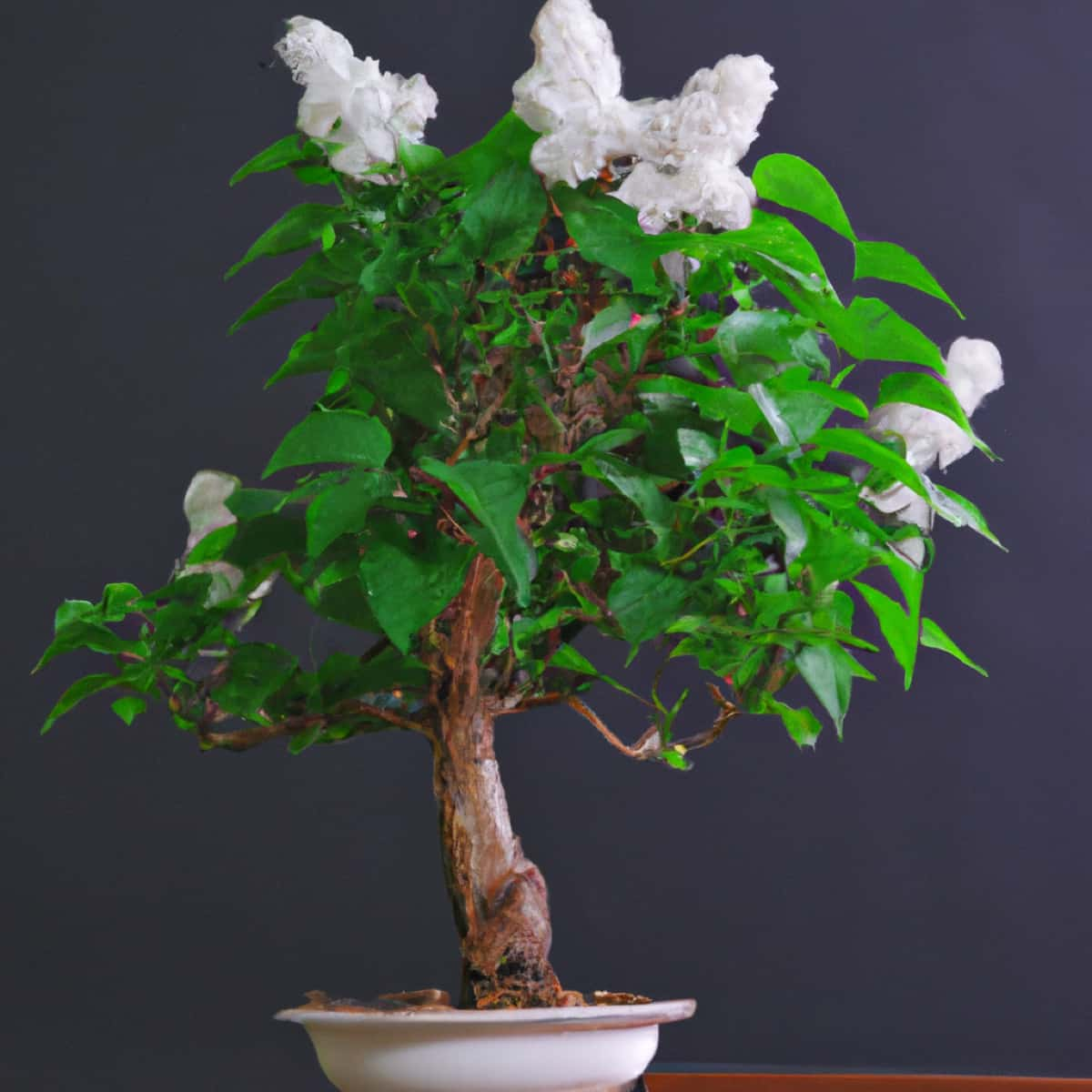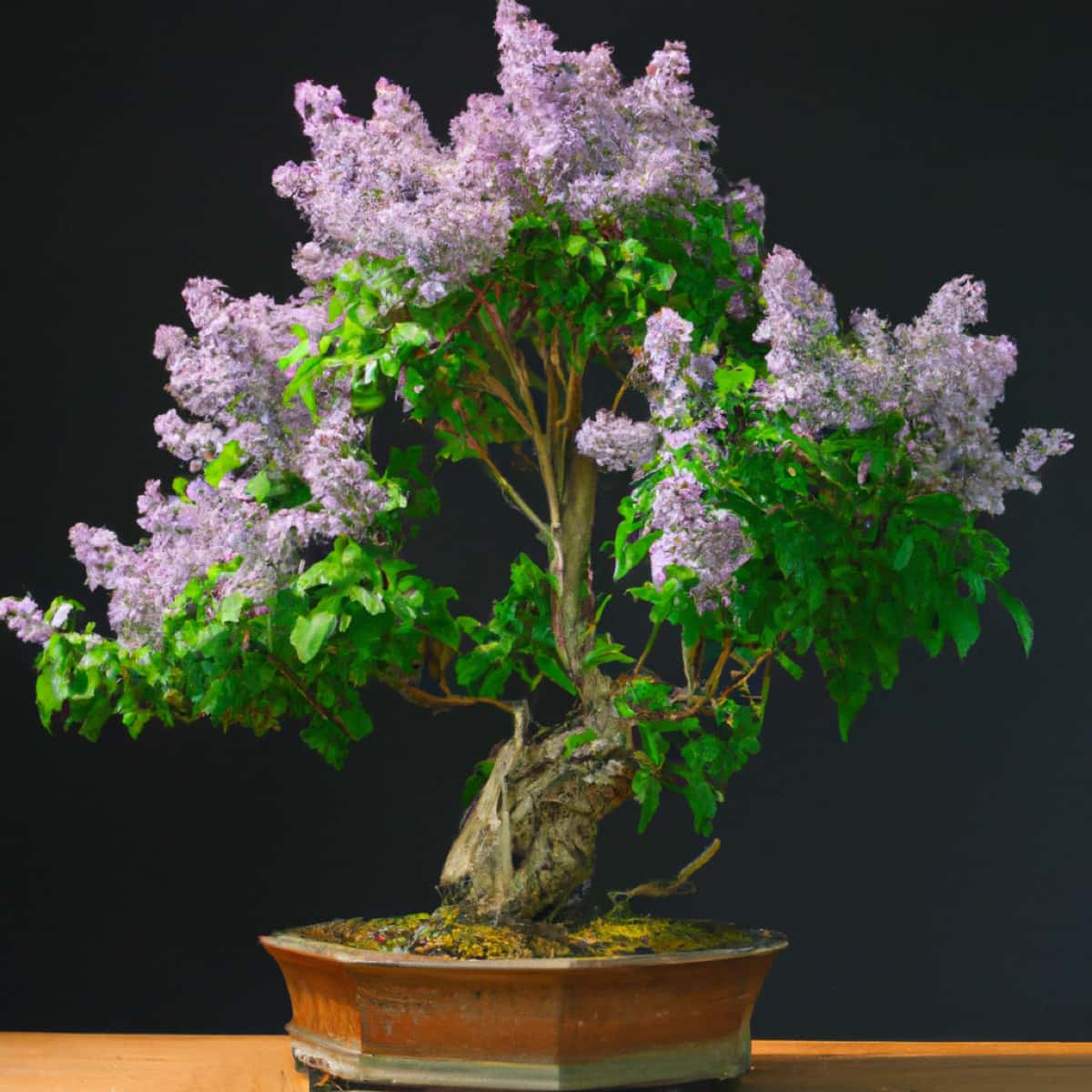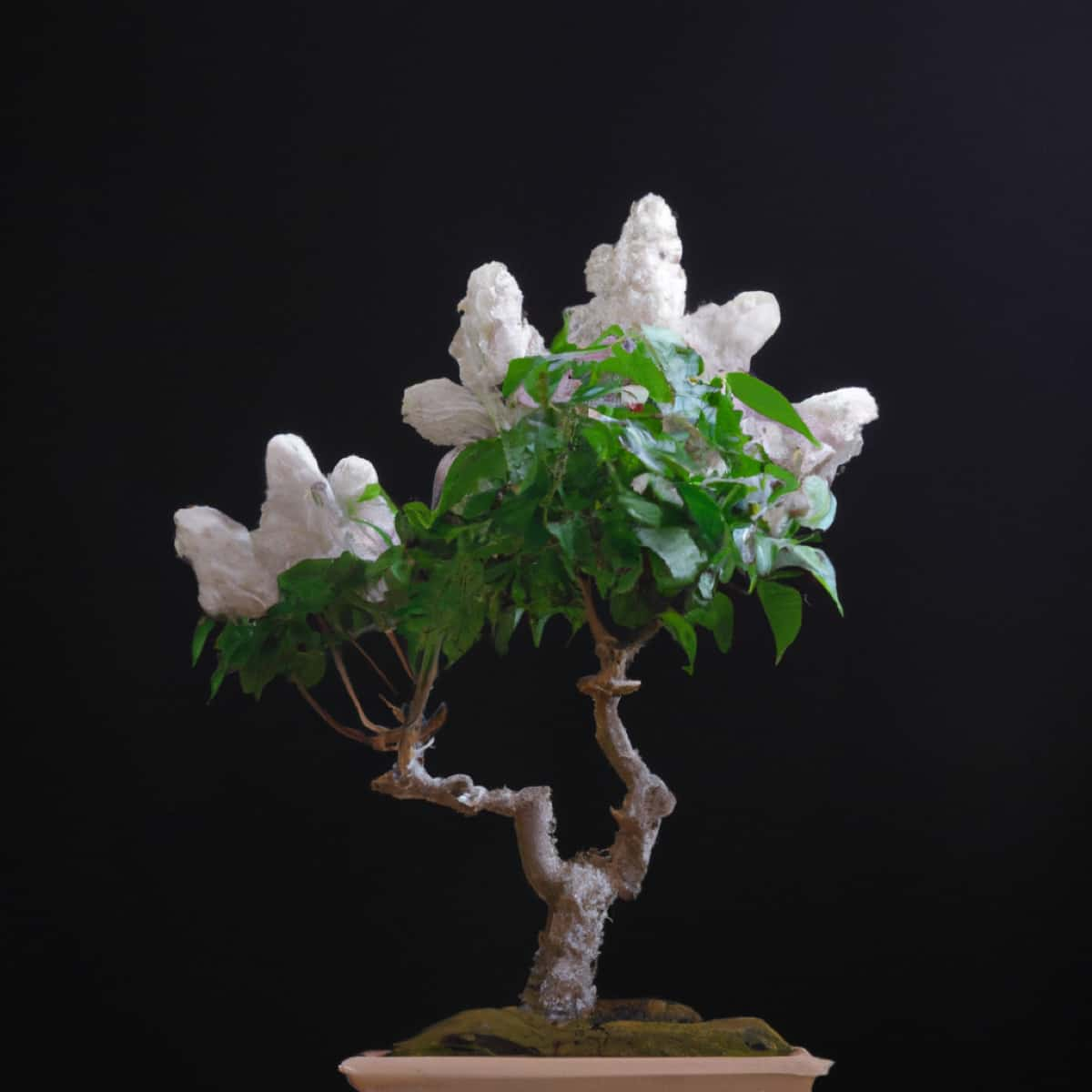Lilacs are exquisite flowering plants, and their beauty can be captured in miniature form through the technique of bonsai. From the most passionate Japanese lilac bonsai growers to novices curious about bonsaiing a lilac tree, everyone can appreciate the charm of this plant. This comprehensive guide answers the question, “Can lilacs be grown as bonsai?” and will also provide you with information on how to bonsai a lilac, offering the knowledge needed to grow and maintain a bonsai lilac bush.

How to Grow and Care for Lilac Bonsai
How to Plant Lilac Bonsai From Seeds
Planting lilac bonsai from seeds requires critical steps to ensure proper growth and development. Start by selecting high-quality lilac seeds. These can be collected from mature lilac plants or bought from a reputable nursery. Soak seeds in warm water for a day to make the outer shell soft and help them sprout. The next step involves stratification, mimicking the winter chill that triggers seed germination.
Place the soaked seeds in a plastic bag with a moistened mixture of sand and peat moss, then refrigerate for about 10 weeks. Once the stratification period is complete, sow the seeds in a tray filled with bonsai soil mix, lightly covering them with soil. Ensure the tray is placed in a sunny location and kept moist but not overly wet to encourage germination. Within a few weeks, seedlings will begin to appear.
Step-by-step Guide to Growing Lilac Bonsai Indoors
Growing lilac bonsai indoors can be gratifying if proper steps are taken. Start with a healthy seedling or a young lilac plant. The next step is to prepare a suitable pot, preferably shallow and wide, to accommodate the root system of your bonsai. Fill the pot with a good-quality bonsai soil mix, ensuring good drainage.
Place your lilac plant in the pot and cover the roots with more soil, firmly but gently tamping it down to eliminate air pockets. Place the new potted plant in a well-lit spot away from direct sunlight until it settles. Ensure the soil remains moist and the humidity is high enough to mimic the lilac’s natural environment. Once the plant is stable, gradually introduce it to direct sunlight.
Essential Care Tips for Maintaining a Healthy Lilac Bonsai
Maintaining a healthy lilac bonsai requires dedication and a consistent care regimen. Watering, feeding, sunlight exposure, and regular pruning are essential to your bonsai’s health. Regularly water your bonsai to keep the soil slightly moist. Depending on the weather, watering may be needed daily or every other day.
Feed the bonsai with a balanced bonsai fertilizer every two weeks during the growing season and reduce feeding in the winter. Exposure to sunlight is crucial as lilacs thrive in bright, direct sunlight for at least six hours daily. Regular pruning shapes your bonsai and encourages new growth and dense foliage.
Best Soil Mix for Growing Lilac Bonsai
The best soil mix for growing lilac bonsai should retain moisture, drain well, and provide good aeration. A mix of Akadama, pumice, and organic potting compost in equal parts can be a good choice. Akadama is a hard-baked Japanese clay specifically used for bonsai, excellent for water retention and nutrient distribution. Pumice helps in drainage and adds structural integrity to the mix. Organic potting compost supplies essential nutrients to the bonsai.
Pruning Techniques for Shaping a Lilac Bonsai
Pruning is essential to shaping a lilac bonsai and maintaining its miniature size. Start with structural pruning, which involves removing undesired branches that interfere with the desired bonsai form. Utilize sharp bonsai pruning shears for precise, plant-friendly cuts.
The next step is maintenance pruning, which involves shortening long shoots and trimming foliage to encourage dense growth. The best time for major pruning is in late winter when the tree is dormant. Regular pruning is needed to keep the shape and size of plants in check during the growth period.
In case you missed it: How to Grow and Care for Carmona Bonsai: Planting, Pruning, and Repotting

Watering Schedule and Techniques for Lilac Bonsai
The watering schedule for lilac bonsai varies depending on several factors, such as the size of the pot, the weather, and the season. As a general rule, lilac bonsai should never be allowed to dry out completely. Water thoroughly until water runs out from the bottom of the pot. Watering may be required daily during hot weather, whereas watering frequency should be reduced during cooler months or rainy periods. Remember, overwatering can lead to root rot and other diseases, so it’s important to maintain a balance.
Sunlight Requirements for Thriving Lilac Bonsai
Sunlight plays a crucial role in the thriving of a lilac bonsai. These plants enjoy full sunlight and need at least six hours of direct sunlight daily. If grown indoors, place your lilac bonsai near a south-facing window where it can receive abundant light. During the hottest part of the day in summer, provide some shade to prevent leaf scorching.
Common Pests and Diseases Affecting Lilac Bonsai and Their Treatment
Like any plant, lilac bonsai can also suffer from pests and diseases. Common pests include aphids, scale insects, and lilac borers. Neem oil spray can effectively control these pests. Improve air circulation and apply suitable fungicides to treat diseases like powdery mildew and leaf spots. It’s always better to prevent than to treat, so ensure good hygiene, adequate watering, and optimal sunlight for your lilac bonsai to keep it healthy.
Winter Care Tips for Protecting Lilac Bonsai From Cold Temperatures
Winter care for lilac bonsai involves protecting the tree from extreme cold temperatures and wind. While lilacs are quite hardy and can tolerate frost, bonsai lilacs are more vulnerable due to their shallow potting conditions. You can protect your bonsai by moving it to a cool, bright room indoors or in an unheated greenhouse or cold frame. Another method is to mulch heavily around the pot or bury it in the ground to protect the root system from freezing.
Repotting Guide for Rejuvenating Mature Lilac Bonsai
Repotting is an important aspect of bonsai care that rejuvenates the plant and encourages healthy growth. Mature lilac bonsai should be repotted every two to three years. Start by removing the bonsai from its current pot. Carefully remove the old soil around the root ball and prune the roots if they’re too long.
In case you missed it: How to Grow and Care for Bougainvillea Bonsai: Planting, Pruning, and Repotting

Prepare a new pot or clean the old one thoroughly, then place a layer of fresh bonsai soil mix at the bottom. Place the bonsai in the pot and add soil around the roots, firmly tamping down to remove air pockets. Water the newly potted bonsai thoroughly and keep it in a shady location for a few weeks to recover.
Conclusion
Cultivating a bonsai lilac bush requires knowledge, patience, and consistent care. Each step is a unique journey, from planting seeds to sculpting a beautiful miniature tree. Bonsaiing a lilac tree is an exquisite blend of art and horticulture.
- Ultimate Guide to Ossabaw Island Hog: Breeding, Raising, Diet, and Care
- Ultimate Guide to Juliana Pig: Raising Facts, Size, Diet, Care, and Lifespan
- Raising Lleyn Sheep: Disadvantages, Price, Uses, Characteristics, and Care
- Ultimate Guide to Meishan Pig: Breed Facts, Breeding, Raising, and Care
- Ultimate Guide to Teacup Pigs: Raising, Diet, Lifespan, Cost, and Care
- Guide to Raising Poll Dorset Sheep: Facts, Profile, Characteristics, Uses, and Care
- Ultimate Guide to Bighorn Sheep: Characteristics, Diet, Lifespan, Breeding, and Lifecycle
- Ultimate Guide to Raising Katahdin Sheep: Farming Facts, Breed Profile, Uses, and Care
- Ultimate Guide to Raising Oreo Cows: Belted Galloways Farming Facts, Profile, Uses, and Care